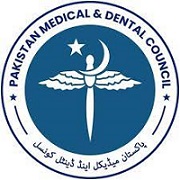FREQUENCY TO ANTI-HBS ANTIBODY POSITIVITY (≥ 10 mlU/ml) IN CHILDREN AGED 5-10 YEARS AFTER HEPATITIS B VACCINATION IN INFANCY
Abstract
BACKGROUND: Hepatitis B is an infection of liver by hepatitis B virus (HBV) which is potentially fatal. The response of hepatitis B vaccine can be seen after 6-8 weeks of immunization and the child is considered protected when he has anti-HBS levels ≥ 10mIU/ml. however few studies have shown that response of hepatitis B vaccination diminishes overtime.
OBJECTIVES: To determine the frequency to anti- HBS antibody positivity (≥10mIU/ml) in children aged 5-10 years after hepatitis B vaccination in infancy.
STUDY DESIGN: Cross-sectional Study
SETTING: Department of Pediatrics, PAC Hospital Kamra
DURATION OF STUDY: 6 months
RESULTS: My study was conducted on 343 cases. Mean age was 7.4606 ± 1.80741 years (minimum was 5 and maximum was 10 years) 47.8% cases had titer less than 10, 43.1% had equal to or more than 10 and 9% had titer equal to or more than 100. 52.2% had immune status positive and 47.8 had negative status.
CONCLUSION: Although majority of our cases were immune to HBV infection but difference was only minor when compared to numbers in non-immune group. After EPI vaccination; immune status was found to be more retained in females as compared to males.HBV





